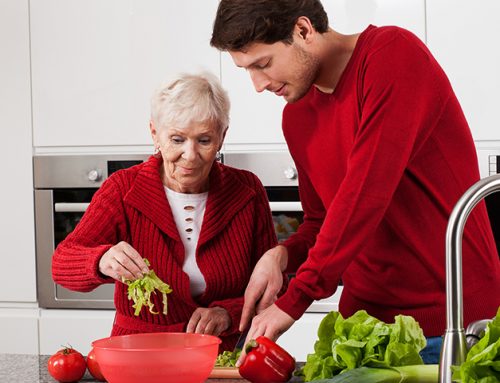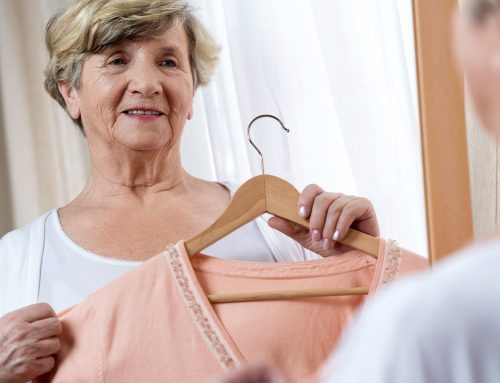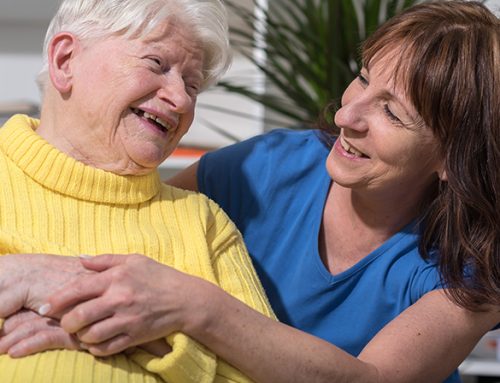Proper foot and toenail care for seniors is an important healthcare goal. Proper foot care for senior feet prevents further injury and protects health as well as promoting a feeling of positive emotional well-being. The older we get, the more important it is to take good care of our feet. But for many reasons, foot health tends to decline in seniors. Reasons why seniors experience common foot problems include:
- Years of walking, working, and healing from injuries
- Low-quality, too-small, or uncomfortable footwear
- Poor circulation
- Increased risk of diabetes, gout, heart disease, and other diseases causing foot problems
- Difficulty properly trimming toenails due to impaired vision or mobility
Left untreated, common elderly foot symptoms can quickly worsen and lead to more dangerous issues like falls and infections. It’s important for caregivers to learn how to routinely inspect and care for their loved one’s aging feet. If a loved one complains or mentions pain, has difficulty walking, or if you observe limping or wincing when your loved one moves his or her foot, these are signs that you should contact a qualified podiatrist immediately for an appointment.
Common Symptoms and Foot Disorders Among Seniors
It’s important to address any foot issue early, as foot pain can often be an early warning sign of a more serious health condition such as arthritis, circulatory disease, gout, or diabetes.
Seniors or caretakers should seek professional advice for:
- Brittle or discolored toenails
- Burning or tingling in the feet or toes
- Discoloration or cold/numb feet
- Chronic or acute pain in feet and ankles
- Blisters or cracked skin
- Sores or wounds
Even when elderly foot pain isn’t a sign of a more serious problem, it can still cause pain in the knees, hips, or back, and lead to decreased activity. Aging skin becomes thinner and less elastic, which makes blisters and corns more common.
Common geriatric foot problems include:
- Diabetic ulcers
- Corns and calluses
- Ingrown toenails
- Fungal infections (Athlete’s foot)
Many of these symptoms can be mitigated with proper foot care. Decreased circulation may mean an elderly patient doesn’t always feel uncomfortable symptoms in their feet, so it’s important to establish a routine of healthy foot maintenance.
Tips for maintaining elderly foot health:
- Inspect feet and nails regularly
- Use mild soap to wash feet, and always dry thoroughly
- Use lotion as needed to prevent dry, itchy, or cracked skin
- Wear properly fitting shoes and clean cotton socks
- Elevate feet using a footstool or cushion when seated
- Don’t sit with legs crossed
- Trim toenails regularly
Elderly individuals unable to care for their own feet are encouraged to contact a podiatrist for periodic foot care appointments.
Toenail Care for the Elderly
Toenails should be carefully trimmed on a regular basis and kept clean and short. Long nails are more likely to snag, break, or accidentally scratch the skin. Caregivers can easily routinely adequately care for a loved one’s toenails along with their fingernails. Following are the proper steps for toenail trimming. When trimming, check the area around the nail for signs of an ingrown nail, hangnail, or fungus.
Proper toenail trimming procedure:
- Cut nails after a shower or bath, or use a foot soak to soften toenails
- Sanitize nail clippers by boiling or cleaning with rubbing alcohol
- Wash your hands before and after cutting your toenails
- Trim nails straight across without curving down at the ends
- Never cut calluses on the feet or nail bed
Elderly patients often struggle with proper toenail care for various reasons, including failing eyesight, reduced flexibility, or arthritis in their hands, which make it difficult to use toenail trimmers.






